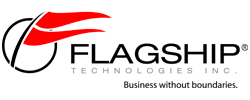Cisco 2.5-inch SSD Interfaces
Cisco 2.5-inch SSDs can use two different interfaces: SATA and NVMe.
- SATA is a legacy interface that is still widely used in servers. SATA SSDs are connected to the server's SATA controller, which uses the SATA bus to transfer data. SATA SSDs are typically slower than NVMe SSDs, but they are also less expensive.
- NVMe is a newer interface that is designed for high-performance storage. NVMe SSDs are connected to the server's PCIe bus, which provides much higher bandwidth than the SATA bus. NVMe SSDs are typically much faster than SATA SSDs, but they are also more expensive.
The following table summarizes the differences between SATA and NVMe interfaces:
The best interface for a Cisco 2.5-inch SSD depends on the specific application. For applications that require high performance, such as database servers or virtualization hosts, NVMe SSDs are the best choice. For applications that do not require as much performance, such as file servers or web servers, SATA SSDs may be a better option.
Here are some examples of Cisco 2.5-inch SSDs that use SATA and NVMe interfaces:
- SATA: Cisco UCS-S3X60 1.6TB 12Gbps SSD (Gen 2)
- NVMe: Cisco UCSC-NVMEHW-H3200 3.2TB NVMe PCIe SSD
Select a product category above to find computer servers, data storage, networking equipment, spare parts and upgrades.
Compare Selected